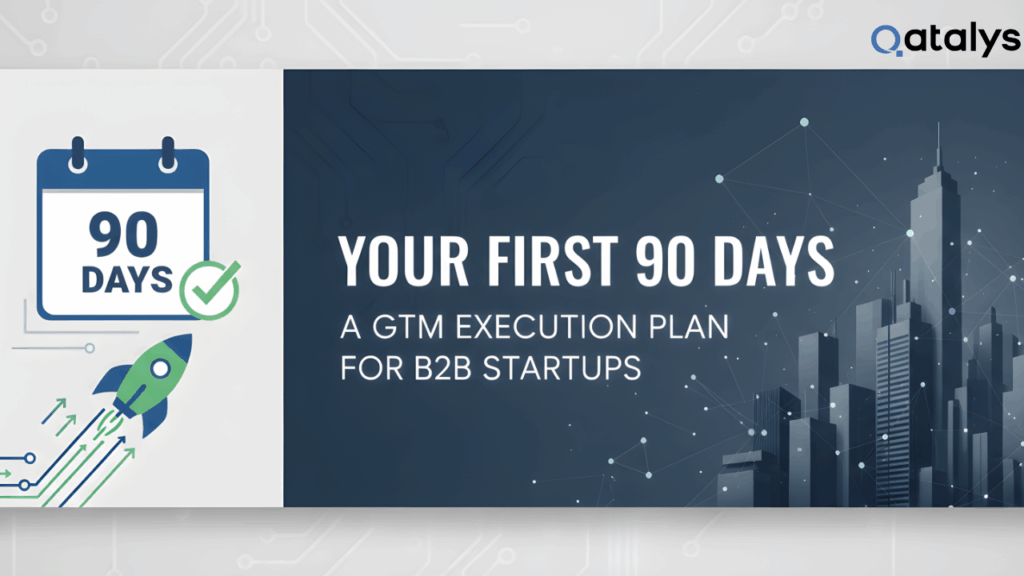Every startup founder thinks they’ve struck gold – until reality hits.
The truth is, most startup ideas don’t fail because of bad tech or poor execution. They fail because no one actually needed them. According to CB Insights, 35% of startups fail because there’s no market demand for what they built.
So before you spend weeks writing code, hiring developers, or even buying a domain – pause. What if you could validate your idea without writing a single line of code?
Validate Your Business Idea Before You Start Coding
This guide will walk you through actionable, no-code steps to test the demand, talk to real users, and gather meaningful signals – so you don’t end up building a product for an imaginary market.
Whether you’re a first-time founder or launching your fifth startup, this process can save you time, money, and heartache.
Step 1: Understand the Problem, Not Just the Solution
Your idea might sound brilliant – but unless it solves a real, painful, and frequent problem, it’s just that: an idea.
Before building anything, flip your thinking from “I have a cool solution” to “What problem am I solving, and for whom?”
This shift changes everything.
Start with research:
- Google Trends – Are people actively searching around your idea?
- Reddit & Quora – What are users complaining about in your niche?
- App/Tool Reviews (e.g., G2, Capterra, Trustpilot) – Look for 1-star reviews of similar solutions. What’s missing?
Don’t just validate the idea – validate the pain.
Ask:
- How often does the problem occur?
- What are people doing to solve it now?
- Are they spending time, money, or effort already?
If people aren’t actively seeking a solution, chances are they won’t care when yours exists.
Understanding the problem better than anyone else is what gives your startup its edge.
Step 2: Talk to Real People (Problem Interviews)
No validation method beats talking directly to your target audience. Not surveys. Not gut instinct. Not ChatGPT.
Start with 10–15 short conversations focused only on the problem, not your solution. Your goal isn’t to pitch – it’s to listen, learn, and observe.
Ask open-ended questions like:
- “Tell me about the last time you faced [problem].”
- “How did you try to solve it?”
- “What was frustrating about the current options?”
Avoid asking “Would you use this if I built it?” – people tend to be polite. Instead, dig for stories, not opinions.
Pro tip: Record the calls (with permission) or take structured notes. Look for patterns in language, frustration, and workarounds.
Tools like Calendly + Zoom or even quick DMs on LinkedIn work great to schedule calls.
If nobody’s willing to talk about the problem, that’s validation in itself – and probably not the good kind.
Step 3: Analyze Competitors (and Learn from Them)
If you think no one else is doing it, that’s not always a good sign – it might mean there’s no market.
Instead of fearing competitors, study them. They’ve already done some of the legwork in validating the space. Your job is to figure out what they missed.
Here’s what to look for:
- Who are their customers? Check reviews, testimonials, and case studies.
- What do people love or hate about them? Read 1–3 star reviews on Trustpilot, G2, or Reddit threads.
- How do they position themselves? Study landing pages, feature sets, and pricing models.
Use tools like:
- SimilarWeb – for website traffic and audience insights
- SEMrush or Ahrefs – for keyword and backlink analysis
- BuiltWith – to understand their tech stack
Spot gaps: underserved niches, bad UX, overpriced plans, etc.
Step 4: Create a Landing Page (Fake It Before You Make It)
Now that you’ve validated the problem, it’s time to test interest. The fastest way? A simple landing page – no code required.
Build a page that clearly communicates:
- What the product does
- Who it’s for
- Why it matters (key benefit or pain point solved)
- A single, clear CTA – “Join waitlist,” “Get early access,” “Subscribe for updates”
Tools like Carrd, Webflow, or Unbounce make this quick. You don’t need a full brand or UI – just clarity and curiosity.
Bonus: Add a short form (name + email) or a waitlist counter. This lets you measure real intent, not just clicks.
Track everything using Google Analytics, Hotjar, or Simple Analytics. Look at bounce rate, scroll depth, and CTA clicks.
If people land and leave – that’s feedback. If they sign up – that’s a green light to go deeper.
Step 5: Run Paid Ads or Social Tests
You’ve got your landing page – now it’s time to drive traffic and measure real-world reactions.
Run a small-budget ad campaign on:
- Meta (Facebook/Instagram) for broad B2C audiences
- Google Search for intent-driven traffic
- LinkedIn Ads if you’re targeting professionals or B2B
- Test 2–3 different value propositions or taglines.
- Example:
- “Tired of messy spreadsheets? Try our zero-setup project tracker.”
- “Save 5 hours a week on manual reporting – without writing a line of code.”
Track:
- CTR (Click-Through Rate) – Are people resonating with the message?
- Conversion rate – Are they taking action on the landing page?
- Keep the spend small – ₹1,000–₹3,000 (or ~$20–$40) is often enough to spot trends.
No clicks or signups? Maybe the messaging needs work – or maybe the demand just isn’t there.
Better to learn now than after building.
Step 6: Build a Prototype or Mockup (Optional but Powerful)
If people are showing interest, a simple prototype can help you go one step further – from curiosity to clarity.
You don’t need to code anything. Use tools like:
- Figma or Adobe XD – for clickable UI mockups
- Canva – for basic visual storytelling
- Marvel or InVision – to simulate app flows or dashboards
Show the mockup to the people who signed up, or revisit earlier interviewees. Ask:
- “Does this solve your problem?”
- “What’s missing?”
- “Would you use/pay for this?”
This step helps you visualize the user journey, gather deeper feedback, and even pre-sell (if you’re confident).
Remember: You’re not designing perfection – just a real-enough preview to validate your assumptions and refine before building.
Step 7: Pre-sell or Collect Commitments
The strongest form of validation? Money or time. If people are willing to pay, join a waitlist, or commit resources – you’ve struck gold.
Here are a few ways to test this:
- Pre-orders via Gumroad, Stripe, or LemonSqueezy
- “Founding member” access with perks like lifetime discounts or early features
- Beta invites with a time-based scarcity angle
Even if you’re not ready to charge, get people to commit their time – to try a prototype, give feedback, or book a demo.
Ask yourself:
- “Can I get 10 people to pay me or block time this week?”
- “Are they excited to follow up – or ghosting?”
- Validation isn’t a “yes” in a survey – it’s action.
No response = no market. Real commitment = green signal to start building with confidence.
Step 8: Know When You’ve Validated Enough
Validation is powerful – but it can become a trap. At some point, you have to stop testing and start building.
So how do you know it’s time?
Look for these signals:
- You’ve spoken to at least 10–15 real users, and they resonate with the problem.
- Your landing page or ad tests are converting – even modestly.
- People are signing up, pre-ordering, or asking when it’s launching.
- You’re hearing repeat patterns in feedback – not new surprises every time.
Set a simple validation goal early on. For example:
“If 100 people visit my page and 10 sign up, I’ll build the MVP.”
If you hit it – move forward. If not – iterate or rethink.
The goal isn’t perfection. It’s enough confidence to start small and learn fast.
Build What Matters
Validating your startup idea doesn’t require a line of code – just curiosity, empathy, and a willingness to listen.
By understanding the problem, talking to real users, testing interest, and measuring commitment, you drastically improve your odds of building something people actually want.
Remember: Ideas don’t win – execution + validation do.
So before you rush to code, take a week to validate. It might save you six months of building the wrong thing.
What’s Next?
Every great startup starts with validation, but it doesn’t stop there. At Qatalys Venture Studio, we co-build with proven startups to help them scale, grow, and dominate their markets.








